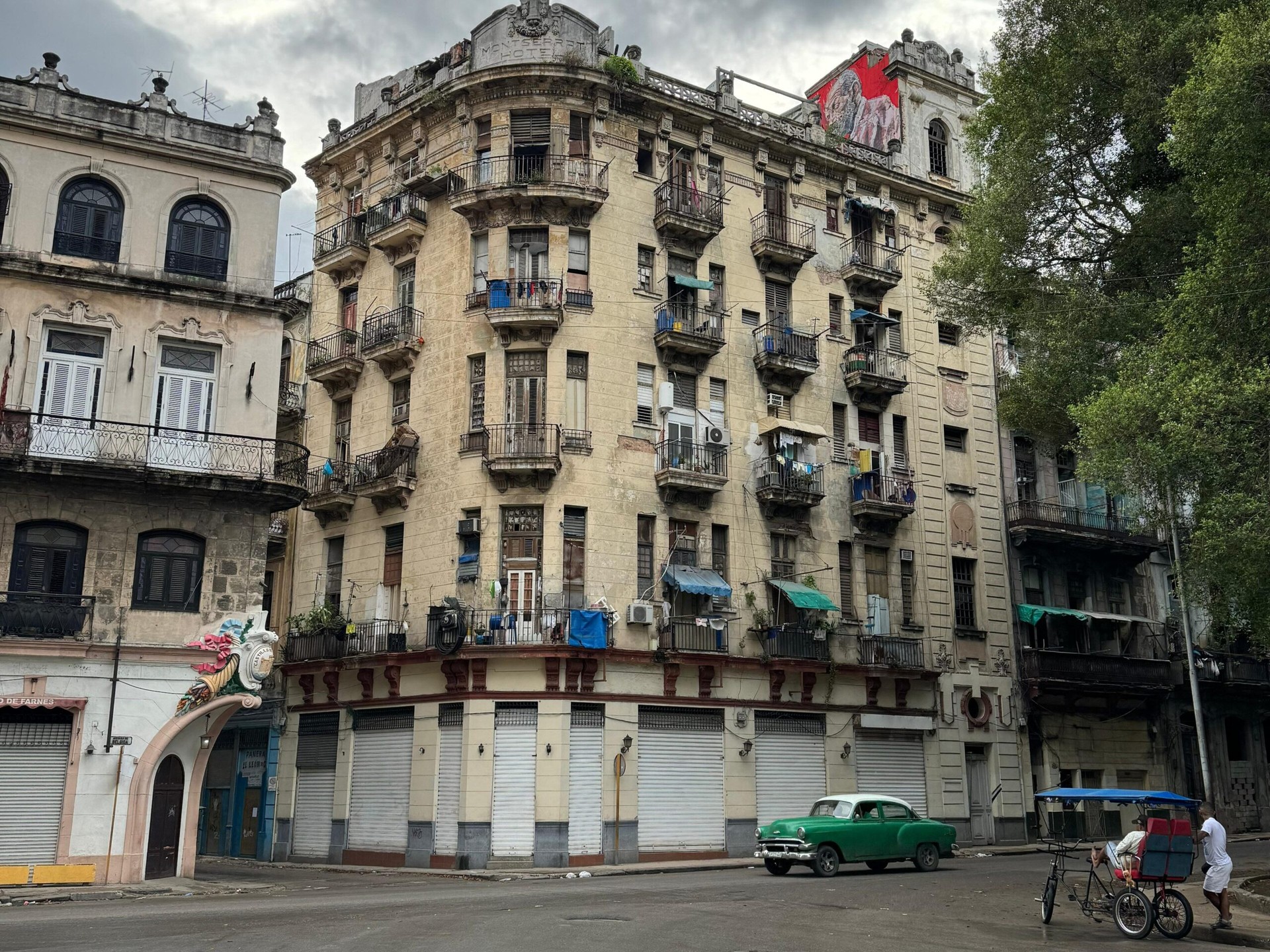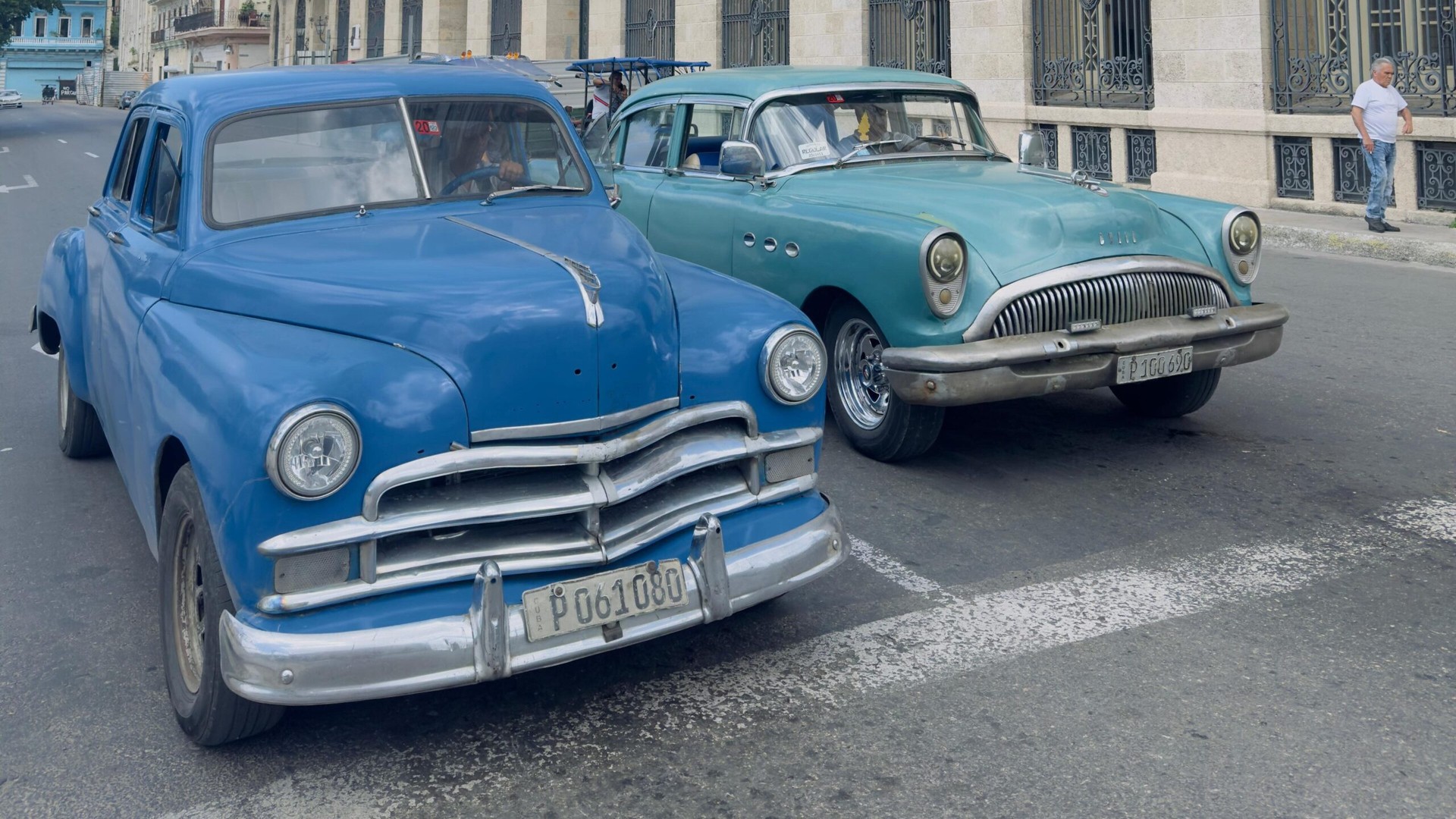
While many places offer a glimpse into the past or future, Cuba is truly unique in its ability to transport you back to the 1950s.
So, what makes Cuba – the jewel of the Caribbean – a unique tropical paradise?
Cuba captivates with its iconic 1950s and 60s American cars, colonial architecture, quirky coco taxis, cigars, mojitos, daiquiris, vibrant locals, lively dances, tobacco fields, tropical fruits and fresh seafood. It’s a dream-like experience where every corner feels like a journey through time.
Once you visit Cuba, you might find yourself tracing the steps of Che Guevara and Fidel Castro, cigar in hand. And when your energy dips, you’ll end up sipping a refreshing mojito from Uncle Ernesto, who’s been perfecting his mojitos for 47 years on Obispo Street.
Once a playground of the American mafia and Hollywood stars, Cuba offers the chance to ride in a classic car past the historic Inglaterra Hotel. Pose for photos at Plaza de la Revolucion – where the iconic portraits of Che Guevara and Cienfuegos loom large.
At the National Hotel, a living museum that’s hosted celebrities and world leaders, you can relax in the garden and feel as if you’ve stepped into the 1930s, sipping eight-year-old Santiago de Cuba rum while taking in the ocean views.

Follow in the footsteps of Ernest Hemingway, who spent his final years in Cuba. Dine at La Bodeguita del Medio, and later enjoy a daiquiri at Floridita, made with white rum, fresh lemon juice, and sugar syrup.
You can even visit a statue of Ataturk on Puerto Street, a touching tribute to Türkiye’s founding leader far from home.
The Revolution Museum, once Batista’s presidential palace, offers a glimpse into Cuba’s past. Here, you’ll see the Cuban revolution’s history, Che and Fidel’s personal items, and the vehicles used during the fight for freedom.
For dinner, head to La Guarida Restaurant, a favorite of international celebrities like the Queen of Spain and Jack Nicholson. Hidden behind crumbling Spanish buildings, this elegant eatery is one of Cuba’s many surprises.
Cuba, the jewel of the Caribbean, constantly amazes; be prepared. Cuba is more than a destination; it’s a journey through time. Beyond just a discovery, it’s an experience that lets you live and feel the past.

The dream of time travel continues. Some visible changes – like the rise of phones, internet access and an increasing number of small cafes – have crept in, but the essence remains.
The jewel of the Caribbean, Cuba, offers not only a rich historical and cultural heritage but also breathtaking natural beauty. Its lush tropical landscapes, stunning beaches and diverse wildlife make it a paradise for nature lovers.
Beaches like Varadero, Playa Paraiso and Cayo Coco are famed for their white sands and turquoise waters, attracting sunbathers, swimmers, and watersport enthusiasts alike.
Inland, Cuba’s tropical rainforests, fertile farmlands and dramatic mountains reveal protected areas filled with exotic animals and rare plants. Places like the Sierra Maestra and Vinales Valley are perfect for hiking, offering awe-inspiring views.
But what about the people who make the jewel of the Caribbean Cuba what it is?
Cubans (Cubanos) are a mix of many ethnic backgrounds, primarily descendants of European immigrants and African slaves. Their culture blends Spanish, French, Portuguese and African influences, creating a vibrant and diverse society. While the majority are Catholic, others follow Atheism, Protestantism, or the unique Afro-Cuban Santeria religion.

You can travel to Cuba on your own, but it’s not recommended. To fully understand and experience the country, an organized tour through a travel agency is the best option. Cuba’s infrastructure, language barriers, road conditions and limited fuel make solo travel challenging.
A week is usually enough to explore Cuba’s major cities, but more time allows for a deeper experience.
• Trinidad: One of Cuba’s best-preserved colonial cities, known for colorful streets, historical buildings, and lively squares. Plaza Mayor is a must-see, with nearby beaches like Playa Ancon adding to the charm. A one- to two-night stay is ideal.
• Varadero: Famous for its turquoise waters and white sands, Varadero is a perfect beach escape. Luxury hotels and all-inclusive resorts offer everything from water sports to vibrant nightlife. Spend two nights here during your weeklong stay.
• Vinales Valley: This region boasts striking limestone cliffs, lush farmland and caves. It’s also the heart of Cuba’s tobacco industry, offering tours of the famous cigar fields.
• Cienfuegos: Known as "The Pearl of the South," this city features elegant French colonial architecture and breathtaking sea views. Nearby, the El Nicho waterfalls are a nature lover’s paradise.
• Cayo Coco: This tropical island on Cuba’s northern coast is a diver’s dream with clear waters and coral reefs. Snorkeling, bird watching and seafood feasts are just a few of the delights.

There’s so much more to discover – Santa Clara’s Che Guevara Monument, the Moncada Barracks in Santiago de Cuba, and Baracoa’s Yunque Mountain all offer unique glimpses into Cuba’s rich history.
From tropical fruits like bananas, mangoes and pineapples to black beans, rice and hearty dishes like ropa vieja, Cuba’s cuisine has something for every budget. Seafood, chicken and pork are staples in Cuban meals.
Cuba offers year-round travel opportunities, but the most pleasant weather is typically found between November and March. Avoid the rainy season from April to October.
For a truly unforgettable journey through time, add the jewel of the Caribbean Cuba to your travel plans.
See you on the colorful streets of Havana!